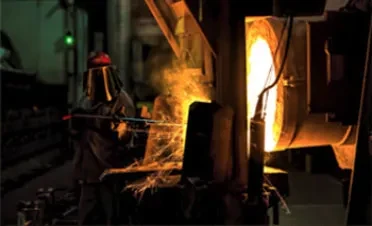die casting identifying features
Identifying Features of Die Casting A Comprehensive Overview
Die casting is a popular manufacturing process that involves forcing molten metal into a mold cavity to create precise and complex shapes. It is widely used across various industries, including automotive, aerospace, electronics, and consumer goods. Understanding the identifying features of die casting is crucial for optimizing production processes and ensuring high-quality output. This article delves into the key characteristics and benefits of die casting, highlighting its significance in modern manufacturing.
One of the primary identifying features of die casting is the ability to work with a variety of metals and alloys. Common materials used in die casting include aluminum, zinc, magnesium, copper, and tin. Each metal offers unique properties that cater to specific application requirements. For instance, aluminum die casting is favored for its lightweight and corrosion-resistant attributes, making it ideal for automotive parts. Conversely, zinc die casting is recognized for its excellent dimensional stability and surface finish, which is beneficial for intricate components.
2. High Precision and Detail
Die casting is renowned for its capability to produce parts with high dimensional accuracy and intricate details. The process allows for tolerances as tight as ±0.1 mm, which is critical for applications requiring precise fit and function. The use of high-quality molds ensures that even the most complex geometries and fine features can be replicated consistently. This high level of precision minimizes the need for secondary machining operations, thus reducing overall production time and costs.
3. Surface Finish Quality
Another distinguishing feature of die casting is the superior surface finish it can achieve. Parts produced through die casting often exhibit smooth surfaces, which can further improve aesthetics and functionality. The smooth finish not only enhances the visual appeal of the components but also reduces the friction between moving parts, leading to improved performance and longevity. For applications requiring even higher surface quality, additional finishing techniques such as polishing or coating can be employed.
die casting identifying features

4. High Production Rates and Cost Efficiency
Die casting is a highly efficient manufacturing process that allows for mass production of identical parts. The quick cycle times—typically ranging from 15 to 60 seconds per cycle—enable manufacturers to produce large quantities of components in a short period. This feature is particularly advantageous in industries with high demand. Furthermore, the automation potential of die casting processes contributes to reduced labor costs and enhanced productivity, making it a cost-effective solution for manufacturers.
5. Design Flexibility
Die casting offers significant design flexibility when it comes to component shapes and sizes. The use of computer-aided design (CAD) software has further enhanced this flexibility, allowing engineers to create complex and innovative designs that were previously challenging to manufacture. The ability to integrate multiple features into a single part also eliminates the need for assembly, simplifying the production process and improving overall reliability.
6. Sustainability Considerations
In recent years, sustainability has become a key consideration in manufacturing processes. Die casting, especially with metals like aluminum, can be a more sustainable option compared to other manufacturing methods. Aluminum is 100% recyclable, and scrap generated during the die casting process can often be reused. Furthermore, advances in die casting technology have led to reduced energy consumption and material waste, aligning with the growing emphasis on environmentally friendly practices.
Conclusion
Die casting stands out as a crucial manufacturing process defined by its material versatility, precision, surface quality, efficiency, design flexibility, and sustainability. Understanding these identifying features is essential for manufacturers aiming to leverage die casting for producing high-quality components. As industries continue to evolve, die casting will remain a vital process, driving innovation and efficiency in production. Whether in auto parts, electronics, or aerospace components, the benefits of die casting are unmistakable, making it a preferred choice in modern manufacturing.
-
Precision Sheet Metal Stamping Manufacturer | Fast & ReliableNewsAug.01,2025
-
OEM Sand Cast Pump Valve Fittings - Baoding Hairun Machinery And Equipment Trading Co., Ltd.NewsAug.01,2025
-
Custom OEM Impellers | High Efficiency & PrecisionNewsAug.01,2025
-
OEM Sand Cast Pump Valve Fittings - Baoding Hairun Machinery | Customization, Quality AssuranceNewsAug.01,2025
-
OEM Sand Cast Pump Valve Fittings - Baoding Hairun Machinery And Equipment Trading Co., Ltd.NewsAug.01,2025
-
OEM Sand Cast Pump Valve Fittings - Baoding Hairun Machinery And Equipment Trading Co., Ltd.NewsJul.31,2025















